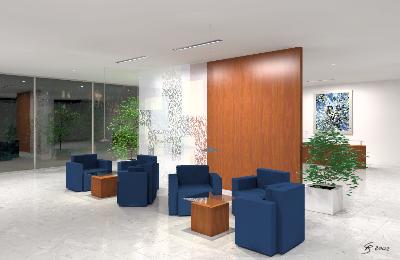Design case study involving procedural textures and semi-transparent image maps

|
Lobby Design case study involving procedural textures and semi-transparent image maps |

|
| 1. | The direct illuminance cache |
| 2. | Procedural textures and the secondary ambient material |
| 3. | Image maps with transparency control |
| 4. | The 'arc' primitives |
| 5. | Image size specification |
| 6. | Conclusionary remarks, sources |
| void plastic base_color 0 0 5 ... ... ... |
|
void texfunc norm_pat 4 ... 0 6 ... ... ... |
|
norm_pat colorfunc pattern 4 ... 0 10 ... ... ... |
|
pattern plastic wall_mat 1 base_color 0 5 ... ... ... |

|
the 'arc' primitives: the start and end angle (a0, a1) and the orientation from which they are counted have to be added to the normal descriptions. examples: void cylinderarc ca 0 0 12 P0x P0y P0z P1x P1y P1z r a0 a1 sx sy sz void ringarc ra 0 0 13 P0x P0y P0z nx ny nz r0 r1 a0 a1 sx sy sz etc, analogously for conearc/cuparc/tubearc |